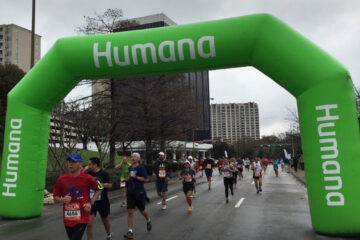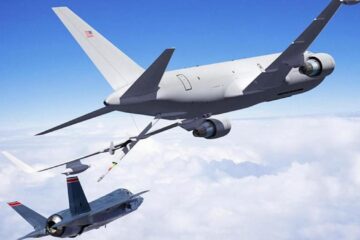Boeing joins a crowded sky of companies looking to take air taxis to new heights, but skeptics doubt consumers will adopt them.
Look, up in the sky…it’s a bird…it’s a plane…
It’s a taxi?
Boeing (BA) – Get Boeing Company Report said that is investing an additional $450 million in Wisk Aero to back development of pilotless flying taxis.
Wisk is owned by Boeing and Kitty Hawk, an air vehicle company owned by Larry Page, Google’s (GOOGL) – Get Alphabet Inc. Class A Report co-founder.
“With this investment, we are reconfirming our belief in Wisk’s business and the importance of their work in pioneering all-electric, AI-driven, autonomous capability for the aerospace industry,” Boeing’s Chief Strategy Officer Marc Allen said in a joint press release.
Keep ‘Em Flying
So are flying taxis really happening or are they just the stuff of Blade Runner and The Jetsons?
Analysts have predicted that the flying taxi market could grow to $150 billion in revenue by 2035
And Boeing and Wisk are by no means the only companies in the flying taxi business. The friendly skies are liable to be a bit crowd as other companies flock to get their vehicles airborne.
Last week the electric-air-taxi startup Joby Aviation tweeted that its full-size prototype of the Joby S4 has completed what is believed to be the fastest flight of any electric vertical takeoff and landing (eVTOL) aircraft to date at it racked up a true airspeed of 205 mph.
Joby went public last year through a reverse merger with special purpose acquisition company Reinvent Technology Partners (RTP) – Get Reinvent Technology Partners Class A Report.
Toyota Motor Corp. (TOYOF) said in 2020 that it would invest $400 million in Joby and help with the design of a 450,000-square-foot factory. This was the same year that Joby acquired Uber Elevate.
Joby, which plans to have passenger service up-and-running by 2024, said it had received special airworthiness certification from the Federal Aviation Administration and U.S. Air Force airworthiness approval for a second pre-production prototype aircraft.
Meanwhile, Archer Aviation (ACHR) said in December that its Maker aircraft, an autonomous two-seater eVTOL aircraft that has been certified for flight testing by the Federal Aviation Administration, recorded its first successful hover flight.
Archer is backed by United Airlines (UAL) – Get United Airlines Holdings, Inc. Report, which said last year that planned to buy 200 flying electric taxies, while investing $1.1 billion into the startup.
No Pilot, No Problem?
In an interview with The Guardian in 2020, Graham Warwick, executive editor for technology at Aviation Week, said “nobody is talking about point to point” when it comes to flying taxis.
“They don’t think they will ever be quiet enough to fly into people’s backyards,” he said.
As to cost, Warwick said to bring down expenses and make air taxis affordable for the masses “you have to get the pilot out.”
“The question is, will people fly in something without a pilot? Nobody really knows the answer to that,” he said.
Richard Aboulafia, vice president of analysis at Teal Group, raised some concerns about flying taxis, writing in a July newsletter that “capital costs are the real problem.” He noted that Archer’s SPAC filing indicated a unit price of $5 million.
“How often are you or your friends given exclusive, personal use of a $5 million machine of any sort?” he wrote. “Everyone pretends that none of this is an issue, and that capital costs aren’t a problem at all.”
The result, he said “is a market valued in the trillions. Because everyone wants to fly in an electric helicopter, right?”
Richard Abbott, co-owner of Abbott Aerospace Canada, wrote “when you see a program that combines electric propulsion with eye-popping production numbers, it is almost certain that the universe is getting ready to create some very disappointed investors.”
“My recommendation – buy a moped,” Abbott wrote. “Equip yourself with some real world urban mobility. It will be better for the planet as well.”


